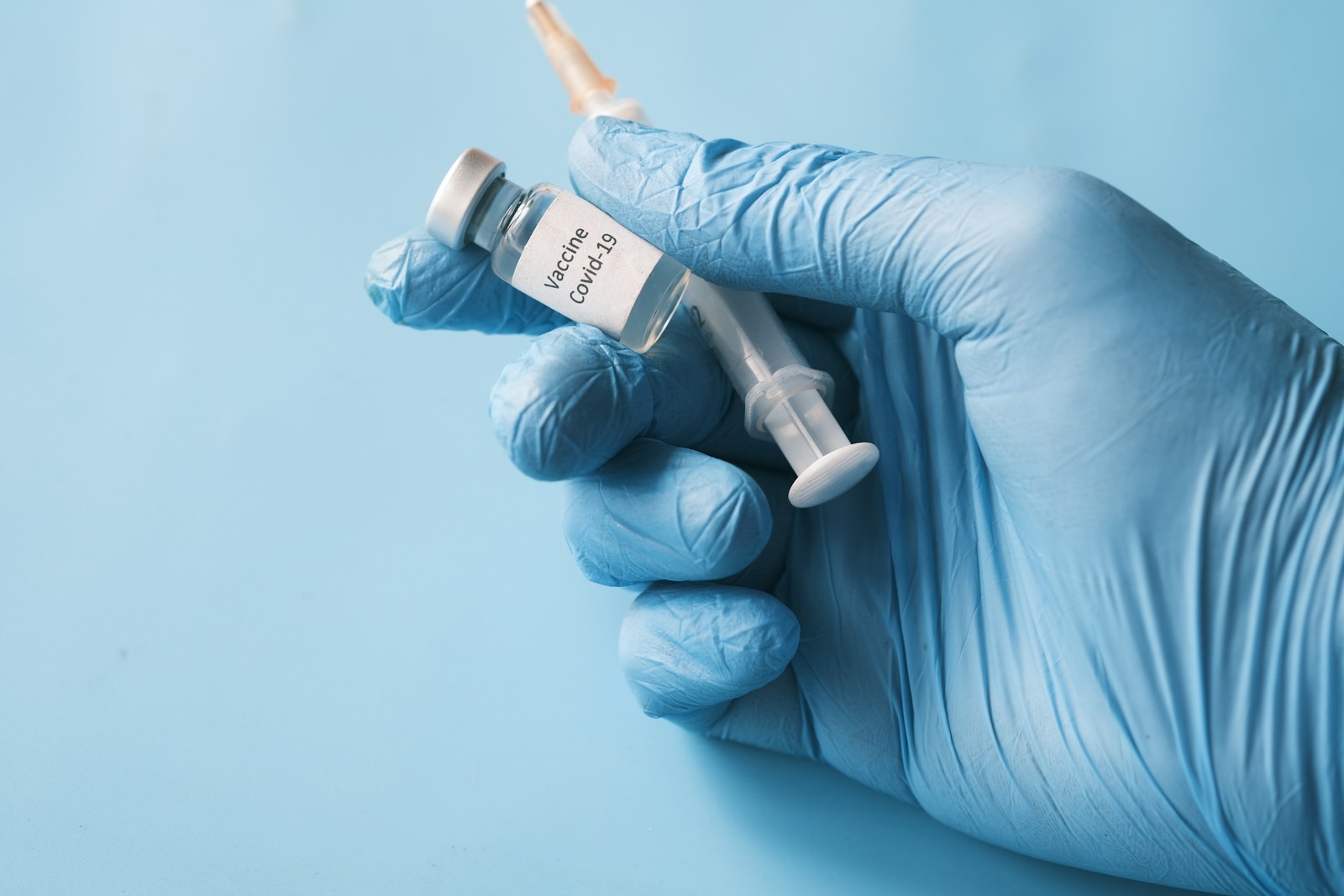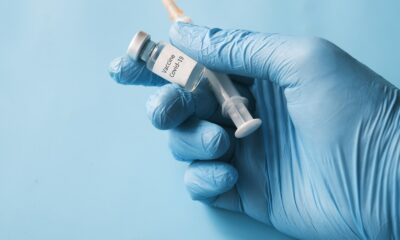Health & Society
Russian Orthodox Church calls on mass culture to abandon ‘images promoting alcoholism’

On the occasion of the Day of Sobriety celebrated in the country today, the Russian Orthodox Church called on mass culture not to promote alcoholism, TASS reported.
The agency recalls that the All-Russian Day of Sobriety is celebrated on the initiative of the Russian Orthodox Church on September 11 to remind people of the harm caused by alcohol. On this day, in some parts of Russia, the sale of alcohol is limited or completely prohibited.
“The culture of attitude towards this is very important. There are many “nice jokes” about alcoholism in our everyday culture. There is nothing good about that. We know what the state of intoxication leads to. Those who deal with mass culture should make an effort that the image of the “dear drunkard” should still leave our mass culture,” said the head of the synodal department of the Moscow Patriarchate for Church Interaction on the sidelines of the St. Petersburg Forum of United Cultures with society and media Vladimir Legoida.
Asked whether it would be appropriate to ban or restrict the sale of alcohol across the country, he said “that would be wonderful”. “But it is important that people do this consciously, independently, not because someone is forcing them, and also that there is, as it is customary to say, a public consensus,” he stated.
Legoida noted that the category of “sobriety” is important for the church in general, which refers not only to abstinence from alcohol.
Meanwhile, during a press conference dedicated to the All-Russian Day of Sobriety, Russia’s Deputy Health Minister Oleg Salagai said that alcohol abuse can reduce a man’s life expectancy by six years and a woman by five years.
“The systemic measures that were adopted allowed us to really reduce alcohol consumption. Today, it can be confidently said that Russia is not one of the most drinking countries in the world,” said the deputy minister, who pointed out that in 2023 alcohol consumption in the country was about 8.4 liters per person, while at the beginning of the century the indicator was in double digits.
Illustrative Photo by EVG Kowalievska: https://www.pexels.com/photo/selective-focus-photography-of-assorted-brand-liquor-bottles-1128259/
Health & Society
Why chocolate should not be given to dogs

Chocolate is a favorite delicacy for people, but for cats and dogs it is a real poison, writes the magazine ” Sciences et Avenir” and explains why pets should not be “pampered” with chocolate under any circumstances.
For them, chocolate is toxic, because it is not properly absorbed by their body. This is due to the alkaloid theobromine, which is contained in cocoa and therefore in chocolate.
The substance becomes dangerous to health when large amounts of it are stored in the liver. About 12 grams of theobromine are contained in dark chocolate, twice as much in milk chocolate, and very small amounts in white chocolate.
Theobromine does not harm humans, as the human body manages to break it down quickly.
However, it takes 20 hours for dogs to get rid of this molecule. It can build up in their liver and cause poisoning if large amounts of chocolate are ingested at once.
Among the symptoms are vomiting, diarrhea, rapid pulse, convulsions.
The same is true for cats. However, they are less attracted to chocolate than dogs because they cannot taste sweets with their tongues, although there are exceptions.
In addition, pet obesity is the subject of a number of educational campaigns aimed at owners.
A court in North West England has banned a British man from keeping pets for the next 10 years because his Dalmatian became too fat. wrote the English tabloid “Sun” in November 2009.
40-year-old man John Green, a resident of Macclesfield in Cheshire, showed extreme irresponsibility towards his dog Barney and fed him chips and chocolate.
Thus, in just three months, it became several times fatter than normal for its breed and reached 70 kg.
Green was tipped off by alarmed, vigilant fellow citizens.
Animal control officials warned Green that his dog’s health was in danger and recommended that he be put on a diet.
However, he did not follow the recommendations and the dog continued to gain weight.
The Dalmatian was eventually removed from his owner’s home in June and put on a diet in a private kennel, where staff made sure he got enough exercise.
As a result, Barney, who is eight years old, lost 40 kg.
Green pleaded guilty to causing his dog unnecessary suffering, but the court found some mitigating circumstances because the man treated Barney more like a friend than a dog and did not realize he was harming him.
That’s why Green was only sentenced to 200 hours of community service and to pay £780 in costs.
Illustrative Photo by Glenn: https://www.pexels.com/photo/high-angle-photo-of-a-corgi-looking-upwards-2664417/
Health & Society
Why does a glass of red wine cause a headache?

A glass of red wine causes a headache, which can be caused by a variety of factors, one of the main culprits being histamines. Histamines are natural compounds found in wine, and red wine, in particular, has higher levels than white wine. When consumed, histamines can cause allergic reactions in some people, leading to symptoms such as headaches.
Red wine gets its rich color and strong aroma from the grape skins that are in contact with the grape juice during the fermentation process. This prolonged contact results in a higher concentration of compounds, including histamines. Histamines are also found in grape skins and can be released during grape crushing and fermentation. In people sensitive to histamines, the body’s reaction to these compounds may include headaches.
In addition, red wine contains another substance known as tyramine. Tyramine is a naturally occurring amino acid that can cause blood vessels to constrict and then dilate, which can lead to headaches. Some people are more susceptible to the effects of tyramine and for them consumption of red wine can cause headaches. Another contributing factor to red wine headaches is the presence of sulfites. Sulfites are compounds commonly used as preservatives in wine. Although they occur naturally to some extent, winemakers often add additional sulfites to preserve wine freshness and prevent spoilage. Some people are sensitive to sulfites, and this sensitivity can manifest as headaches or migraines. Additionally, the alcohol content of red wine may also play a role in causing headaches. Alcohol is a diuretic, meaning it increases urine production, leading to dehydration. Dehydration can contribute to headaches, and when combined with other factors such as histamines and tyramine, it can increase the likelihood of a wine-induced headache.
It is important to note that individual reactions to red wine may vary. Factors such as genetics, general health, and personal sensitivities play a significant role in determining how someone reacts to the compounds found in red wine. For those who consistently experience headaches after consuming red wine, it may be beneficial to explore alternatives that are lower in histamine and sulfites or consult a health professional to determine specific triggers and find ways to alleviation of symptoms. Additionally, staying hydrated and drinking wine in moderation can help minimize the risk of headaches associated with red wine consumption.
Photo by Pixabay: https://www.pexels.com/photo/wine-tank-room-434311/
Health & Society
ASTRAZENECA confirms in England that its vaccine can produce thrombi

The company AstraZeneca confirms in official documents that its vaccine against COVID-19 can cause side effects such as thrombosis. And it has done so due to the publication in The Telegraph newspaper of a series of data on a class action lawsuit filed in the English High Court for 51 cases of people who have died or suffered serious injuries.
La empresa se expone a una indemnización cercana a los 100 millones de libras. Al parecer, su vacuna “Vaxzevria, desarrollada con la Universidad de Oxford, causó la muerte y lesiones graves en decenas de casos. Los abogados argumentan que la vacuna produjo un efecto secundario que ha tenido efectos devastadores en un pequeño número de familias, informa el diario británico.” (1)
As early as 2021, the European Medicines Agency detected some cases of thrombosis with thrombocytopenia, also linked to Pfizer and Moderna vaccines. However, considering them so insignificant at that time, it decided not to investigate. Such cases did not generate concern then, nor do they do so now. They are considered collateral damage. Deaths or people with visible damage due to vaccines are diluted in the figures of those vaccinated and are insignificant for the organizations that have to monitor these companies.
How much money did the pharmaceutical companies make from the COVID-19 vaccine?
In an article from August 2021, almost three years ago, official figures were given on how much profit the COVID-19 business had brought in for pharmaceutical companies: “The international pharmaceutical majors involved in the production of the covid-19 vaccine collectively earned more than €24.5 billion in the first half of 2021, driven by growing demand for the drug. Pharmaceuticals Pfizer, AstraZeneca, Moderna and Johnson & Johnson made a net profit of €24.522 billion in this period, an increase of 66% over 2020.” (2)
From January to June 2021 Pfizer posted a profit of $10.44 billion, up 56% from the previous year (2020). AstraZeneca reported a net profit in the first six months of 2021 of $2.696 billion, up 51.7% from the previous year. Moderna, in the same time period reported earnings of $4,001 million, achieving the first net profit in its history. Finally, Johnson and Johnson reported a net profit of 12,475 million dollars, 32.4% more than in the first half of the previous year.
If we add to all the above millions that we are only referring to one period of the pandemic, imagine the amount of money they have moved since then, and especially if we take into account that the vaccine against Covid-19 has practically become chronic, just like the flu vaccine.
The fact that now the international criminal courts are forcing them to pay some small amounts does not mean any reduction in their treasury coffers. The big pharmaceutical companies, with the help of the media and above all of the states, have forced us to buy, through FEAR, a vital necessity: to be vaccinated so as not to be pointed out as a danger to society, as it happened in those years, where even the security forces of the states were put to the task of arresting and fining those who, exercising their rights, refused to be vaccinated.
Today it is AstraZeneca who is paying, hopefully others will follow in other countries and then class action lawsuits will follow against governments and politicians. Who will pay us citizens back for the time stolen?
1.- AstraZeneca admite que su vacuna contra el Covid-19 puede provocar efectos secundarios como la trombosis (msn.com)
2.- ¿Cuánto dinero ganan las farmacéuticas gracias a las vacunas del covid? (atlantico.net)
-

 EU & the World5 days ago
EU & the World5 days agoDonald Trump’s Hush Money Trial Sentencing Delayed Until After 2024 Election
-

 EU & the World5 days ago
EU & the World5 days agoDonald Trump vs. E. Jean Carroll: A Closer Look at the Ongoing Sexual Assault Case
-

 EU & the World5 days ago
EU & the World5 days agoWhy Was Green Day Rushed Off the Stage in Detroit? Inside the Drone Situation
-

 EU & the World2 days ago
EU & the World2 days agoTaylor Swift Endorses Kamala Harris, Slams Donald Trump for AI Images of Her
-

 Sports5 days ago
Sports5 days agoJannik Sinner, smooth finish: he’s ready for history
-

 Sports1 day ago
Sports1 day agoColbey Ross says thank you to Michael Arcieri
-

 Sports3 days ago
Sports3 days agoJulian Gamble, touching farewell to Virtus Bologna
-

 EU & the World6 days ago
EU & the World6 days agoPaul Harrell: Who Is the YouTuber Who Announced His Own Death?





















